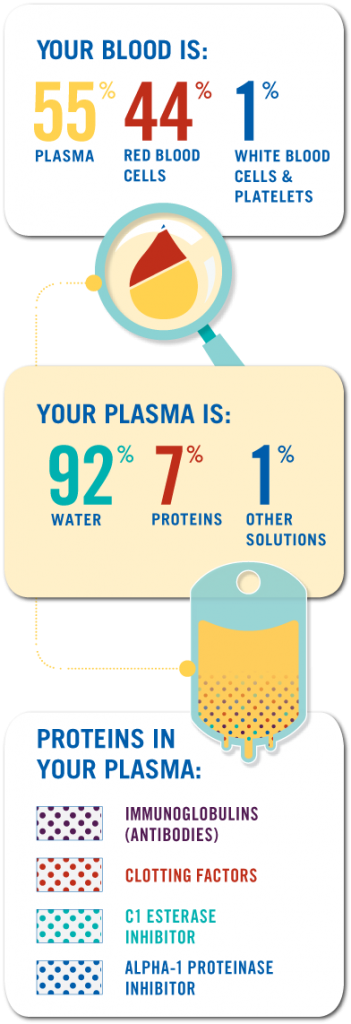 Plasma is the single largest component of human blood, comprising about 55 percent, and contains water, salts, enzymes, antibodies and other proteins.
Plasma is the single largest component of human blood, comprising about 55 percent, and contains water, salts, enzymes, antibodies and other proteins.
Plasma is composed of 90% water.
Plasma is a transporting medium for cells and a variety of substances vital to the human body.
Plasma carries out a variety of functions in the body, including clotting blood, fighting diseases and other critical functions.
Source plasma is plasma that is collected from healthy, voluntary donors through a process called plasmapheresis and is used exclusively for further manufacturing into final therapies (fractionation). Source plasma donors may be compensated for their commitment.
Recovered plasma is collected through whole blood donation in which plasma is separated from its cellular components. Recovered plasma may be used for fractionation
